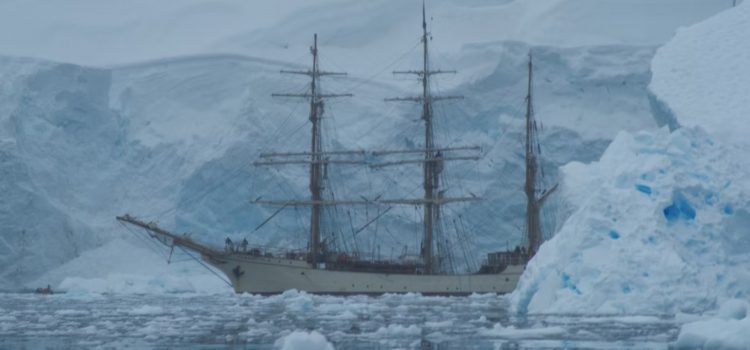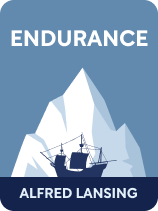

This article is an excerpt from the Shortform book guide to "Endurance" by Alfred Lansing. Shortform has the world's best summaries and analyses of books you should be reading.
Like this article? Sign up for a free trial here .
What is Endurance by Alfred Lansing about? What should you take away from the book?
Endurance tells the story of British explorer Ernest Shackleton and his 27 men who in 1914 set out to cross Antarctica on foot. But their ship became trapped between massive ice floes, forcing them to begin an 11-month journey through ice and open ocean.
Keep reading for a brief overview of Alfred Lansing’s Endurance.
Endurance by Alfred Lansing
Alfred Lansing, a US journalist who had served in the Navy, wrote the definitive account of the nearly two-year journey 45 years later. To construct the narrative, he relied on the diaries most of the men aboard the Endurance kept, and he interviewed every member of the crew who was still alive at that time.
Lansing’s desire to write the book came from his own experience in the Navy and from a book he read during his time there about an American ship during World War I. Years later, he encountered a biography of Shackleton, and it fueled his interest—even obsession—with the story. He became friends with Shackleton’s biographers and traveled to meet some of the survivors of the Endurance expedition. Those visits, correspondence with survivors, and his reading of their diaries informed the book.
Background of the Expedition
Endurance by Alfred Lansing starts with a background of the expedition. The Imperial Trans-Antarctic Expedition was Shackleton’s third journey to the South Pole. The expedition was intended to be the first to cross the entire Antarctic continent by foot, and it was an opportunity for the British Empire to leave a lasting legacy in the exploration of Antarctica.
Kicking Off the Expedition
The Endurance set out from London on August 1, 1914. (Three days after the Endurance sailed from London, Great Britain declared war on Germany in what would become known as World War I.) The Endurance made the trip across the Atlantic without Shackleton because he had stayed behind to deal with financial matters. The entire crew met in Buenos Aires, Argentina, and this is where their adventure began.
Dealing With the First Problems
On January 16, the Endurance became trapped between ice floes. For two days, they couldn’t move because of a powerful gale. However, the gale moved the ice and on January 18, they passed through the floes. But in the afternoon of the same day, they found themselves trapped again, this time by a soft, snow-like pack. They could see the open ocean on the other side, so they tried to get through but again ended up trapped between two ice floes.
Over the next six days, the gale packed ice all around the Endurance. A powerful wind from the north had moved the packs in the direction of the continent. The only way out for the Endurance was an equally powerful gale from the south.
Lansing makes clear that there was no possibility of rescue for the crew. They had no radio transmitters to ask for help, and even if they managed to contact someone, there was no means of transportation that could reach them and get them to safety.
Surviving the Ice Pack’s Pressure
On July 16, they saw that the ice pack had fragmented. The individual floes on the pack moved with the wind, creating pressure on the floe surrounding the Endurance and on the ship itself. Around them, ice floes crashed into each other continuously, lifting into the air. Throughout August of 1915, the Endurance withstood the ice, and Lansing believes this gave the men confidence that the Endurance could survive anything.
Living on the Ice Floes
However, the ship eventually took on water and forced the crew to abandon the ship. After leaving the Endurance, Shackleton and his crew set up several different camps on ice floes while they waited for better weather conditions to continue their journey. They had to move camps often because their floe cracked or melted, and they eventually abandoned the floes and got on their boats when the ocean drift took them away from the islands they were aiming for.
Arriving at Elephant Island
On April 15, 497 days after they were last on firm land and eight days rowing through the ice, they finally reached land: Elephant Island. As they landed, several men collapsed in exhaustion and pain. One had a heart attack, and three were unable to walk. Despite those difficulties, Lansing explains that they were elated to be on land. There was plenty of wildlife on the island, so they could finally hunt and eat fresh food. There was also a glacier where they could collect ice to melt for drinking water.
Accomplishing the Final Rescue
Shackleton and five other men left the remaining crew on the island to find help. His smaller crew made it to South Georgia Island where they finally came across people. Shackleton made several attempts to rescue the rest of his crew on Elephant Island. They tried to rescue them with three different ships, but none was strong enough to get through the ice pack, and each time they had to turn back.
After three failed attempts, Shackleton finally rescued the 22 men on August 30, 1916. Shackleton had convinced the Chilean government to lend him a steel ship and on August 25 he left Stromness and returned five days later with every last man alive.
After the Expedition
In Endurance, Alfred Lansing also writes about the aftermath of the expedition. He says that it was more than four decades until someone else attempted to cross the Antarctic continent on foot. In 1955, Vivian E. Fuchs led the Commonwealth Trans-Antarctic Expedition that crossed the continent by foot with more resources and better technology than had been available to the Endurance crew. Also in 1955, a group of well-equipped, expert climbers crossed South Georgia Island on foot.

———End of Preview———
Like what you just read? Read the rest of the world's best book summary and analysis of Alfred Lansing's "Endurance" at Shortform .
Here's what you'll find in our full Endurance summary :
- The story of the Endurance, an expedition ship that sunk on its way to Antarctica
- The crew's journey of survival and their search for rescue
- How Ernest Shackleton lead the crew to safety






